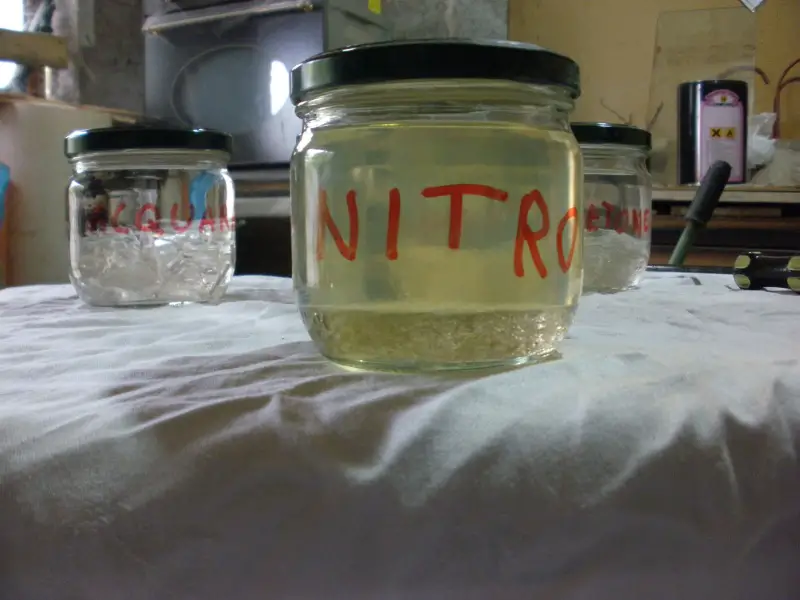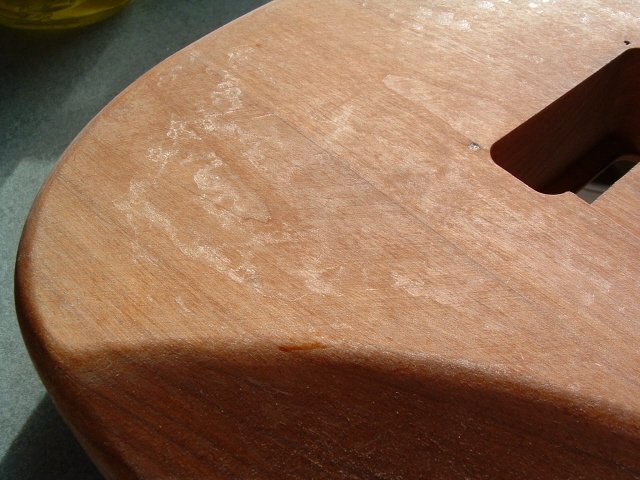Sometimes combined systems are used to finish a wooden object or furniture. For example, a coat of nitrocellulose varnish can be applied over a polyurethane primer. Or a polyester primer is applied and the final varnish is polyurethane. And the examples could go on. When the finishing system includes products of the same type (nitro-nitro, polyurethane-polyurethane), there should be no incompatibility problems because the products are formulated to work together. However, when different products are combined it is good to be aware of the problems that may arise or to check the compatibility between coats before starting the furniture finishing.

Nitro over polyurethane, yes. Polyurethane over nitro, no
One of the most common combinations is between nitrocellulose and polyurethane products. What you need to know when making such a combination is that you never apply polyurethane over nitro. The reverse is absolutely no problem. That is, you can apply nitrocellulose varnish over polyurethane primer, but never apply polyurethane varnish over nitro primer/varnish.
But why can't this be done? What are the consequences of misapplication? Nitrocellulose products are materials that dry by evaporating the thinner in which the nitrocellulose resin is dissolved. The process is reversible, i.e. when thinner is applied to the film, it softens and becomes liquid again. Polyurethane products dry and harden through a chemical reaction between components A and B (primer/lacquer and catalyst) and the process is irreversible.
When polyurethane varnish is applied over dry nitro primer, the thinner in the polyurethane mixture softens the nitro primer. In the meantime, the applied polyurethane varnish begins to cure. This process may end before all the thinner that has softened the nitro primer has evaporated and so some remains trapped under the lacquer film. The thinner tends to evaporate and come out, but will meet the resistance of the lacquer film. At some point, the thinner will force its way out and break the varnish film from place to place. In factories, it is said that the film blooms. Basically, small craters appear and damage the varnish film.

Just because nothing happened once doesn't make it right
Some will say they applied polyurethane over nitro and nothing happened. That doesn't mean they did it right. They simply got lucky that the thinner evaporated faster and the lake hardened slower. But it was luck, a chance that might not happen again! It's like when you get behind the wheel drunk and don't get into an accident. You made a mistake, but you got lucky.
Problems can also occur when applying other materials. It is therefore a good idea to check compatibility before applying different products. This is not a difficult thing to do and it doesn't take long, but it saves a lot of problems that can arise and a lot of work to solve them.
I hope you find the above information useful. As usual, additions are welcome. And if you have any questions or queries, please leave them in the space below. I'm sure I'll reply.






























Hello, I'm bothering you with a problem I haven't found the solution to, I have a pine table top, for a table, I used a water based primer at the beginning, after the drying time specified on the primer box, I painted the table with white, a water based paint. I gave it 3 coats, after drying, I used a water based polyurethane varnish for parquet from Kober, having a much higher resistance to scratches. Of course, I got this information all from your articles, which I read with great interest. The point is that I have yellow stains, and I don't know why, first if I thought it was from the sun, I have cleaned everything well and started again but this time in a closed space, after a while, those uneven stains started to appear again, could it be a problem from the floor polish?! Painting the countertop white, you can see those stains appearing, and I can't figure out what could be the cause! Thank you very much, I'm waiting for a reply ! thanks also for the articles you make, they help me enormously, in DIY projects
Hello.
Pine is a resinous tree and more than likely those yellow spots are resin. In the factory the large bags of resin from wood or knots that have resin are removed and replaced with pieces of wood (sticks) or twigs (in the case of knots). It is possible that the pine countertop you have has such resin pockets which, in warm periods, expand and come to the surface. Unfortunately the usual finish does not prevent this.
The only way to get rid of the problem is to use a top coat of polyurethane insulation. The most effective ones are solvent-based. They are catalyzed products (100%), diluted so that they penetrate as deeply as possible into the wood and block the resin inside. After drying this coat you can apply water based paint or other type of finish.
Resin is best seen on paint, especially white or light-coloured paint. On the transparent colourless finish it is very little visible.
All the best!
Hello,
I would need your help please, with some clarifications/help if you can.
1. Is polyurethane varnish the same as water-based varnish?
2. How would you recommend treating an untreated beech countertop to be attached to a bar fixture (in a restaurant)?
Would a primer + a water-based varnish do the job (e.g. oskar's wood aqua or I found another water-based varnish from Cedria that seemed to be of better quality. )
Or would this polyurethane varnish be more resistant? Can you please recommend one or more suppliers in this regard?
3. Instead of beech we also have the option of Hornbach's already oiled oak top. It looks better, but as it is already oiled, can we apply a varnish over it for a better resistance?
Thank you in advance.
Hello!
1. Polyurethane varnish is of several kinds. The one referred to in the article is solvent-based polyurethane varnish. Water-based varnishes can be acrylic, acrylic-polyurethane or polyurethane. Polyurethane is the generic name given to a three-dimensional polymer obtained by a polymerisation reaction between the cyan group (-CNO) and the hydroxyl group (-OH). The result is different depending on the ratio of participants, temperature, catalysts, etc.
Water-based varnishes can be applied over nitro varnish without softening it. However, it needs to be well sanded beforehand for the lacquer to adhere.
2. For a bar top a solvent-based polyurethane varnish is much better. It has much better mechanical strength, resists alcohol, coffee stains, wine, is scratch and abrasion resistant. Look at the distributors of ICA, Sirca, Sayerlack, Renner, Remmer.
3. You can only apply alkyd varnish over the oil, otherwise it has no adhesion. Alkyd varnish does not have very good mechanical resistance. But you can apply a Rubio Monocoat curing oil or a Borma Wax tabletop oil.
Good luck!